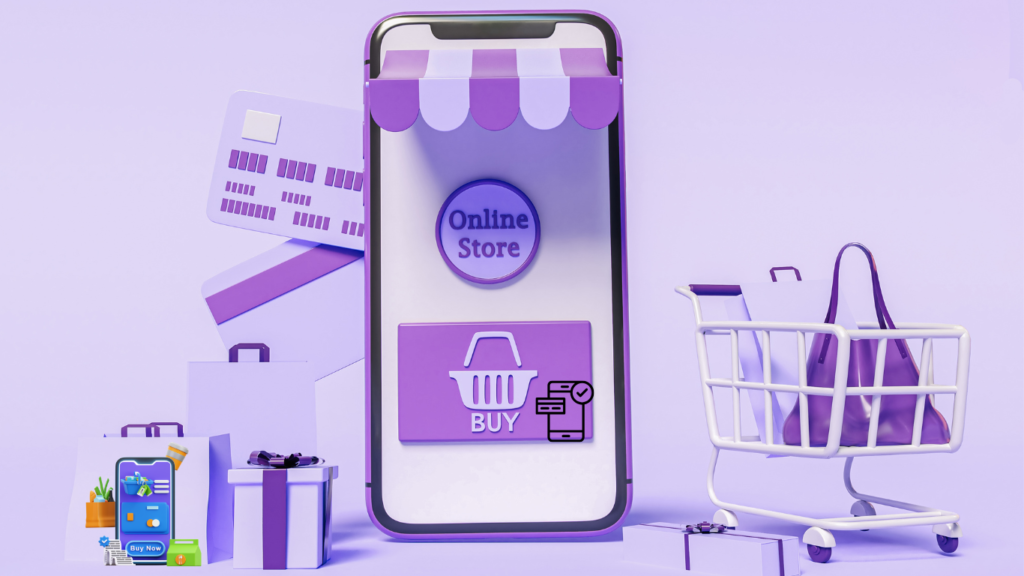Mobile Commerce in 2025: Transforming Shopping in the Digital Age
Thanks to mobile commerce, shopping is just a tap away in today’s fast-paced world. But what exactly is mobile commerce? Simply put, m-commerce is the act of buying and selling products or services through mobile devices like smartphones and tablets. It has revolutionized the way people shop, making it faster, easier, and more accessible than ever before.

Why is Mobile Commerce So Popular?
Mobile commerce has surged in popularity due to its convenience, allowing users to shop anytime, anywhere. Whether commuting, relaxing at home, or waiting in line, your mobile device offers easy browsing and purchasing.
The rise of m-commerce is also fueled by a variety of apps and websites designed for mobile users. Platforms like Amazon, Flipkart, and Myntra provide smooth, user-friendly shopping experiences. Even grocery apps like BigBasket and Instacart simplify everyday purchases. Specialized mobile commerce apps, such as Nykaa and Ajio, offer tailored experiences to niche markets, keeping users engaged.
Technological advancements further drive M-commerce, with seamless payment systems and personalized product recommendations powered by AI. These apps suggest items based on browsing history, preferences, and trends, providing a customized shopping experience. This not only enhances customer satisfaction but also boosts sales for businesses.
How Does Mobile Commerce Work?
Mobile commerce works through apps and mobile-optimized websites. Here’s how it usually happens:
- Search for Products: You use an app or website to find what you need.
- Add to Cart: Once you find a product, you add it to your virtual shopping cart.
- Make Payment: You pay using various options like credit cards, UPI, mobile wallets (like Paytm and Google Pay), or cash on delivery.
- Receive Your Order: The product is delivered to your doorstep, often with tracking updates.
Benefits of M-Commerce
- Convenience: Shop 24/7 without stepping out.
- Variety: Access a wide range of products and services.
- Secure Payments: Mobile wallets and secure payment gateways make transactions safe.
- Time-Saving: No more long queues or travel to stores.
- Enhanced User Experience: Features like voice search, AR for product visualization, and push notifications make shopping more interactive and enjoyable.
M-commerce also supports small businesses by providing them with a platform to reach a global audience. For instance, platforms like Etsy allow small-scale artisans and entrepreneurs to showcase their products to millions of users.
Real-Life Examples of Mobile Commerce
- Amazon: One of the largest e-commerce platforms, its mobile app allows users to shop for almost anything, from electronics to groceries.
- Swiggy and Zomato: Mobile commerce for food delivery, letting users order meals from their favorite restaurants.
- Netflix and Spotify: Subscriptions for entertainment services are another form of mobile commerce.
- Nykaa: Specializes in beauty and personal care products, making it a popular choice among shoppers.
- Shein: A global fashion retailer known for its affordable and trendy clothing, entirely driven by its mobile commerce model.
Challenges of Mobile Commerce
While M-commerce is growing rapidly, it faces several challenges. Many users encounter issues like slow internet, payment failures, or concerns about data security. Businesses are working hard to address these obstacles and improve the mobile commerce experience, ensuring smoother shopping processes for consumers.
One significant hurdle is maintaining user trust. Many consumers worry about the security of their personal and financial information when shopping online. To address these concerns, companies are implementing advanced encryption technologies, two-factor authentication, and strong privacy policies to safeguard customer data.
Another challenge for M-commerce is the digital divide. Not everyone has access to smartphones or high-speed internet, especially in rural areas. Closing this gap will require collaboration among governments, businesses, and technology providers to ensure that mobile shopping is accessible to all.
The Future of Mobile Commerce in 2025
M-commerce in 2025 continues to evolve with AI-driven chatbots, voice commerce, and augmented reality (AR), making online shopping more interactive and personalized. Faster payment methods like instant UPI transfers and the expansion of 5G technology are improving the mobile shopping experience. Sustainability-focused platforms are also gaining traction, enabling users to make eco-friendly purchases conveniently.
A major trend in M-commerce is the rise of social commerce, where platforms like Instagram and TikTok integrate mobile shopping features, allowing users to buy products directly from posts and videos. This seamless blend of entertainment and mobile retail boosts engagement and conversions.
Another exciting development is subscription-based mobile commerce, where users sign up for regular deliveries of essentials like groceries, pet supplies, and curated boxes. Apps like Blue Apron and Dollar Shave Club have popularized this model, enhancing customer loyalty in the m-commerce space.
With these advancements, M-commerce is set to redefine digital shopping, offering convenience, speed, and personalization like never before.
Key Innovations to Watch in Mobile Commerce
- Voice Commerce: Virtual assistants like Alexa and Google Assistant are enabling users to shop using voice commands.
- AR and VR Integration: Try-before-you-buy features using AR are becoming common in industries like fashion and furniture. For example, IKEA Place lets you visualize furniture in your home before purchasing.
- Cryptocurrency Payments: With the growing acceptance of cryptocurrencies, some platforms are introducing Bitcoin and other digital currencies as payment options.
- Sustainable Shopping: Consumers are demanding eco-friendly products, and mobile commerce platforms are responding by highlighting sustainable options and brands.
In conclusion, M-commerce in 2025 is transforming the way we shop. It’s quick, easy, and accessible to everyone. With advancements like AI, AR, and 5G, the future of M-commerce is bright and full of possibilities. If you haven’t tried mobile shopping yet, give it a go and experience the convenience yourself!
Do you use mobile commerce? Share your experience with us!
